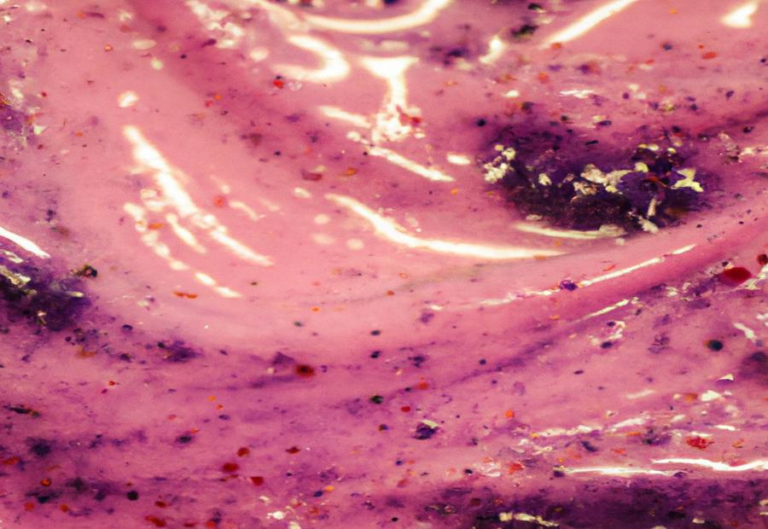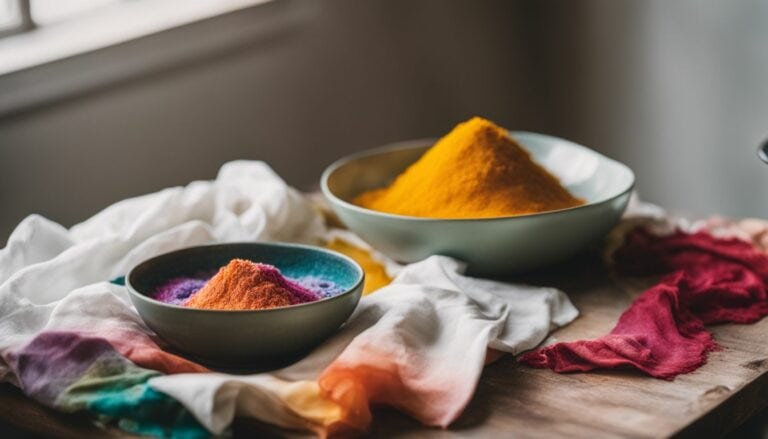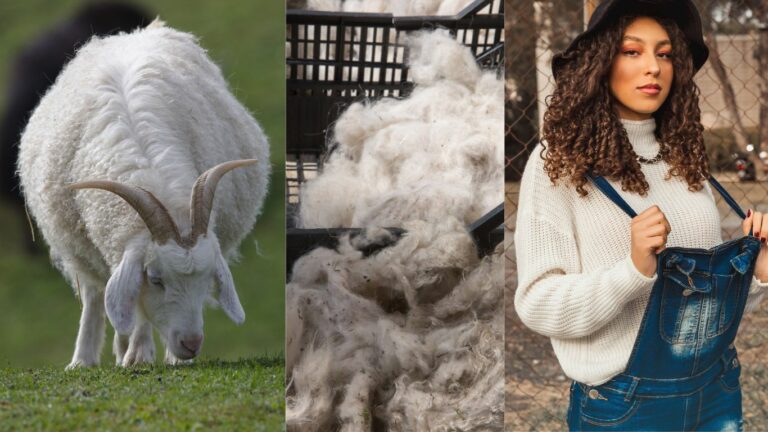Discover the Surprising Truth: Is Rit Dye Eco-Friendly?
Coloring your clothes with dyes can be a fun and personalized way to breathe new life into your wardrobe. But have you ever stopped to consider if the dye you use is eco-friendly? This blog will provide an in-depth look at Rit Dye, a popular choice for fabric dying, and its impact on the environment.
Stay with us as we delve into more sustainable alternatives that are better for both you and Mother Earth.
Key Takeaways
- Rit Dye contains harmful chemicals that can harm the environment.
- Natural dyes and plant-based dyes are eco-friendly alternatives to Rit Dye.
- Organic and non – toxic dye options offer safer choices for dyeing fabrics.
What is Rit Dye and How Does it Impact the Environment?

Rit Dye is a widely used fabric dye that contains harmful chemicals which can have potential negative impacts on the environment.
Harmful chemicals in Rit Dye

Rit Dye holds harsh chemicals. They can put our earth in danger. Even though it is safe to use on fabric, it’s not kind to the world around us. It isn’t biodegradable either. These chemicals do not go away and can harm plants and animals alike.
Potential environmental impact

Rit dye has the potential to negatively impact the environment. This is due to the presence of harmful chemicals in its composition. While Rit dye is non-toxic and safe for use on fabrics, it contains synthetic dyes that are not biodegradable.
This means that when these dyes enter water systems, they can have a lasting effect on aquatic life and ecosystems. The production and disposal of Rit dye also contribute to pollution and waste.
Therefore, if you’re looking for an eco-friendly option, it’s important to consider alternative dye options that are more environmentally conscious and sustainable.
Eco-Friendly Alternatives to Rit Dye

There are several eco-friendly alternatives to Rit Dye, including natural dyes, plant-based dyes, and organic and non-toxic dye options.
Natural dyes

Natural dyes are a more eco-friendly and sustainable option compared to Rit dye. They are made from plant-based sources and do not contain harmful chemicals. Here are some benefits of using natural dyes:
- Biodegradable: Natural dyes are biodegradable, meaning they break down easily in the environment without causing harm.
- Non-Toxic: Natural dyes are non-toxic and safe to use, making them a healthier choice for people and the planet.
- Earth-Friendly: Using natural dyes reduces the release of synthetic chemicals into waterways, minimizing environmental pollution.
- Renewable Sources: Natural dyes can be derived from various renewable sources such as flowers, leaves, roots, and bark.
- Low-Impact: The production process of natural dyes has a lower impact on the environment compared to synthetic dyes.
- Enhanced Colors: Natural dyes can create beautiful, vibrant colors that vary depending on the source materials used.
Plant-based dyes

- Plant-based dyes are a natural and eco-friendly alternative to Rit dye.
- These dyes are made from plants like flowers, leaves, roots, and bark.
- They do not contain harsh chemicals that can harm the environment.
- Plant – based dyes are often biodegradable, meaning they break down naturally over time.
- They come in a variety of colors, ranging from soft pastels to vibrant hues.
- Some commonly used plant – based dyes include indigo, turmeric, beetroot, and onion skins.
- These dyes can be used to color fabrics such as cotton, linen, and silk.
- When using plant – based dyes, it’s important to follow proper dyeing techniques for optimal results.
- Plant – based dyes may require mordants or fixatives to help set the color on the fabric.
- By choosing plant – based dyes, you can create beautiful and sustainable colors while minimizing your impact on the environment.
Organic and non-toxic dye options
Organic and non-toxic dye options are a better choice for eco-conscious individuals who want to avoid the harmful chemicals found in Rit dye. Here are some alternatives to consider:
- Natural dyes: Made from plants, fruits, vegetables, and even insects, natural dyes offer a more sustainable option. Examples include indigo for blue, turmeric for yellow, and cochineal for red.
- Plant-based dyes: Derived from plant materials like leaves, roots, and bark, plant-based dyes are safe and biodegradable. Options such as onion skins (for orange) and avocado pits (for pink) can create beautiful colors.
- Low-impact dyes: These dyes are specifically formulated to have minimal environmental impact while still providing vibrant colors. They are often made with renewable resources and use less water in the dyeing process.
- Organic fabric dyes: These dyes are made from organic compounds and do not contain harmful additives or chemicals. They are certified by organizations that promote sustainability and environmental responsibility.
- Biodegradable dyes: These dyes break down naturally over time and do not harm the environment when disposed of or washed out of fabrics. They contribute to a circular economy by reducing waste.
The Pros of Using Rit Dye

Rit Dye offers a wide range of vibrant colors, making it easy to create unique and personalized clothing.
Wide range of colors available
Rit dye offers a wide range of vibrant colors to choose from for your fabric dyeing projects. Whether you’re looking for bold and bright hues or more subtle shades, Rit dye has options to suit every preference.
With their extensive color palette, you can easily customize and transform your clothing and other fabric items into unique pieces that reflect your personal style. From deep blues and rich reds to soft pastels and earthy tones, there’s a color for everyone in the Rit dye collection.
Ease of use and versatility
Rit dye is known for its ease of use and versatility. Whether you are a beginner or experienced dyer, Rit dye can be easily applied to various types of fabric such as cotton, silk, wool, and more.
It comes in both liquid and powder form, giving you the flexibility to choose your preferred method of application. You can use it in top-loading or front-loading washing machines, making it convenient for dyeing larger items like clothing or even bedding.
With a wide range of colors available, Rit dye allows you to explore different shades and create personalized looks for your fabrics. Additionally, if you have old clothing that needs a refresh or want to upcycle your garments, Rit dye provides an easy way to revive them with vibrant and long-lasting color.
Ability to revive and upcycle old clothing
Rit dye has the ability to revive and upcycle old clothing, which is a great way to give new life to your wardrobe. Whether you have clothes that are faded or stained, Rit dye can help restore them with vibrant color.
By using Rit dye, you can transform dull clothing into something new and exciting, without having to buy new garments. This not only saves you money but also reduces waste by reusing what you already have.
It’s a creative way to refresh your style while being mindful of the environment. So instead of throwing away old clothes, consider giving them a makeover with Rit dye and enjoy wearing your revamped pieces again.
The Cons of Using Rit Dye
Rit Dye poses environmental concerns due to its harmful chemicals, potential health risks, and limited long-term sustainability. Learn more about these drawbacks and explore eco-friendly alternatives for responsible dyeing practices.
Environmental concerns
Rit dye raises environmental concerns due to its use of harmful chemicals. These chemicals can have a negative impact on the environment when they are released during the dyeing process or washed out of fabrics.
Rit dye is not biodegradable, which means it does not break down naturally over time. This can lead to pollution in waterways and harm aquatic life. In addition, the production of synthetic dyes like Rit also contributes to air and water pollution, as well as greenhouse gas emissions.
It is important to consider these environmental concerns when choosing a dye option for your clothing and fabric items.
Health risks associated with the chemicals

Rit dye contains harsh chemicals that can pose health risks to individuals. These chemicals, such as benzidine-based dyes, have been linked to respiratory problems and skin irritations in some people.
It is important for users to take proper precautions when using Rit dye, such as wearing gloves and working in a well-ventilated area.
Limited long-term sustainability
Rit dye has limited long-term sustainability. This means that the dye itself is not biodegradable, so it can have a lasting impact on the environment. When we use Rit dye, the chemicals in it can end up in our water systems and harm aquatic life.
Additionally, when we dispose of clothing or fabric dyed with Rit dye, these chemicals can leach into the soil and pose risks to plants and animals. It’s important to consider more environmentally friendly options for dyeing fabrics to help reduce our impact on the planet.
There are alternative eco-friendly and low-impact dyes available that are considered more sustainable than Rit dye, including natural dyes made from plants or non-toxic synthetic options that break down easier in nature.
Conclusion: Making Informed Choices for Eco-Friendly Dyeing
In conclusion, when considering eco-friendly dyeing options, it is important to be aware that Rit dye is not considered environmentally friendly due to the presence of harmful chemicals and its lack of biodegradability.
However, there are alternative natural and low-impact dyes available that offer safer and more sustainable choices for coloring clothing and fabrics. By making informed decisions, we can contribute towards a greener future for our planet.
FAQs
1. Is Rit dye eco-friendly?
No, Rit dye is not considered to be eco-friendly as it contains synthetic chemicals that can harm the environment.
2. Can I use Rit dye without causing harm to the environment?
It is possible to minimize the environmental impact of using Rit dye by following proper disposal guidelines and using natural fibers for dyeing.
3. What are some alternatives to Rit dye that are more environmentally friendly?
There are several alternative dyes available, such as natural plant-based dyes or eco-friendly dyes made from recycled materials, which have a lower environmental impact compared to Rit dye.
4. How should I dispose of leftover Rit dye properly?
To dispose of leftover Rit dye properly, you should follow local regulations for hazardous waste disposal or consider donating it to community organizations or schools that may be able to use it safely for art projects.







